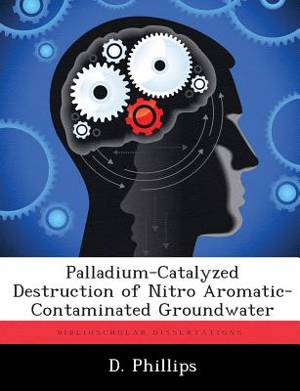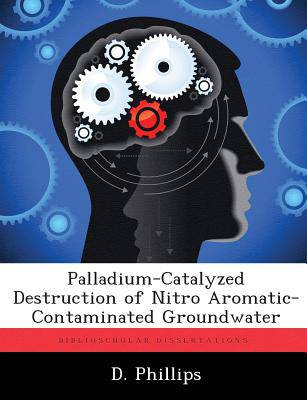
Door een staking bij bpost kan je online bestelling op dit moment iets langer onderweg zijn dan voorzien. Dringend iets nodig? Onze winkels ontvangen jou met open armen!
- Afhalen na 1 uur in een winkel met voorraad
- Gratis thuislevering in België vanaf € 30
- Ruim aanbod met 7 miljoen producten
Door een staking bij bpost kan je online bestelling op dit moment iets langer onderweg zijn dan voorzien. Dringend iets nodig? Onze winkels ontvangen jou met open armen!
- Afhalen na 1 uur in een winkel met voorraad
- Gratis thuislevering in België vanaf € 30
- Ruim aanbod met 7 miljoen producten
Zoeken
Palladium-Catalyzed Destruction of Nitro Aromatic-Contaminated Groundwater
D Phillips
Paperback | Engels
€ 54,45
+ 108 punten
Omschrijving
Of the over 17,000 DoD sites that potentially require remediation, sites containing soil and groundwater contaminated by energetic compounds are prevalent (Larson et al., 2001). Production of energetics such as 2,4,6-trinitrotoluene (TNT), hexahydro-1,3,5- trinitro-1,3,5-triazine (RDX), and octahydro-1,3,5,7-tetranitro-1,3,5,7-tetrasocine (HMX) for use in munitions has created a DoD-wide problem due to improper disposal techniques (Price et al., 2001). Nitro aromatic compounds (NACs) similar to those used in explosives can also be found in insecticides, herbicides, pharmaceuticals, dyes, plastics, and many other commonly used products. The natural breakdown of these contaminants creates byproducts such as amines, which are known neurotoxins and carcinogens. The focus of this study was to determine the effectiveness of using a palladium (Pd) catalyst to reductively destroy NAC-contaminated groundwater under various conditions and to assess the feasibility of using a catalytic reactor in a horizontal flow treatment well (HFTW) system. Experimental results indicate reaction rates are dependent on both pH and reductant concentration in all experimental catalyst/reductant systems. Catalyst poisoning was seen at high contaminant concentrations in systems where molecular hydrogen was used as a reductant at low concentrations.
Specificaties
Betrokkenen
- Auteur(s):
- Uitgeverij:
Inhoud
- Aantal bladzijden:
- 90
- Taal:
- Engels
Eigenschappen
- Productcode (EAN):
- 9781288319985
- Verschijningsdatum:
- 19/11/2012
- Uitvoering:
- Paperback
- Formaat:
- Trade paperback (VS)
- Afmetingen:
- 189 mm x 246 mm
- Gewicht:
- 176 g

Alleen bij Standaard Boekhandel
+ 108 punten op je klantenkaart van Standaard Boekhandel
Beoordelingen
We publiceren alleen reviews die voldoen aan de voorwaarden voor reviews. Bekijk onze voorwaarden voor reviews.











